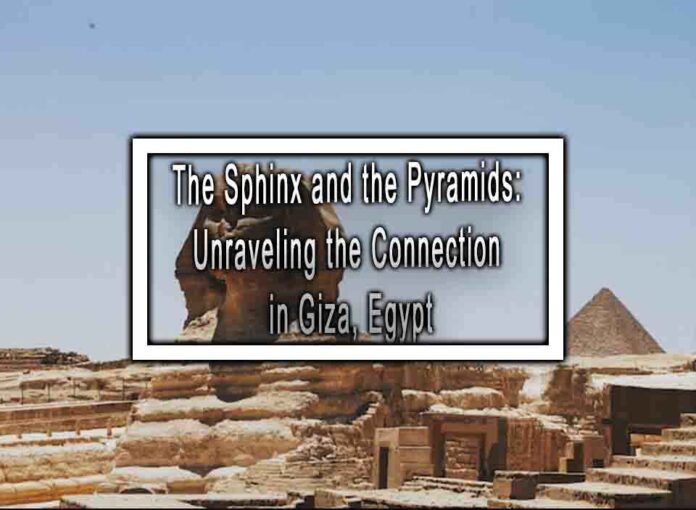The Sphinx and the Pyramids of Giza, located on the Giza Plateau in Egypt, are two of the most iconic and closely connected ancient structures in the world. They have fascinated historians, archaeologists, and tourists alike for centuries. Let’s unravel the connection between the Sphinx and the Pyramids:
1. Geographic Proximity:
- The Sphinx and the Pyramids are located in close proximity to each other on the Giza Plateau, just outside Cairo, Egypt.
- The Great Sphinx is situated near the eastern edge of the plateau, while the three main pyramids are aligned in a row on the western side.
2. Age and Construction:
- Both the Sphinx and the Pyramids date back to ancient Egypt’s Old Kingdom period, specifically during the 4th Dynasty (circa 2600-2500 BCE).
- The Pyramids were built as tombs for pharaohs, serving as monuments to their power and a means to ensure a successful afterlife.
- The Great Sphinx, on the other hand, is believed to be a monumental sculpture rather than a tomb. Its exact purpose remains a subject of debate among scholars, with theories ranging from a guardian of the pyramids to a representation of the pharaoh or the sun god Ra.

3. Architectural Significance:
- The Pyramids of Giza are among the most remarkable architectural achievements of ancient Egypt. The three main pyramids are:
- The Great Pyramid of Khufu (Cheops): The largest of the three and one of the Seven Wonders of the Ancient World.
- The Pyramid of Khafre: Slightly smaller than Khufu’s pyramid and featuring a complex including the Great Sphinx.
- The Pyramid of Menkaure: The smallest of the three main pyramids.
- The Pyramids showcase advanced engineering and construction techniques, including precise alignment with astronomical features.
4. Connection Between Khafre’s Pyramid and the Sphinx:
- The Pyramid of Khafre is particularly significant because it is directly associated with the Great Sphinx. The Sphinx is believed to have been carved from a natural limestone outcrop that was left in place during the construction of Khafre’s pyramid complex.
- The Sphinx is positioned facing east, directly in front of the Pyramid of Khafre, creating a striking visual and symbolic connection.
5. Symbolism and Mythology:
- The Sphinx, with its lion’s body and human head, represents a mythical creature with deep symbolism in Egyptian mythology. It is often associated with guardianship and protection.
- The Pyramids, as monumental tombs, were also seen as protective structures for the pharaohs in the afterlife.
6. Historical Significance:
- Together, the Sphinx and the Pyramids are iconic symbols of ancient Egyptian civilization, representing the grandeur and ingenuity of the pharaohs and their culture.
- They have attracted explorers, scholars, and tourists for centuries, contributing to the understanding and appreciation of Egypt’s ancient history.
The connection between the Sphinx and the Pyramids of Giza lies not only in their geographic proximity but also in their shared historical and cultural significance. They are enduring symbols of the achievements and mysteries of ancient Egypt, and their presence on the Giza Plateau continues to inspire awe and curiosity to this day.











